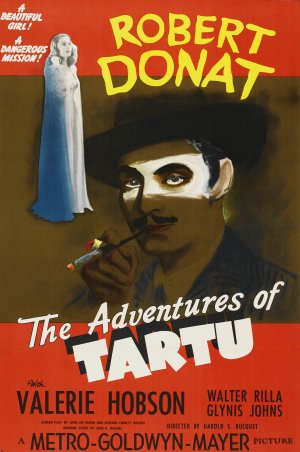“My Christian name was Philip Pirrip, which I pronounced Pip….”
SHUT UP, PIP!
Seriously, there’s a lot of good things that can be said about Charles Dickens’s Great Expectations but most readers simply can’t get past the fact that the narrator insists on being called Pip. I don’t necessarily blame them, as Pip might be a good nickname for a child but, by the time you’re 16, you should be demanding that everyone call you Phil. That said, I’ve always liked Great Expectations. Despite the fact that Charles Dickens could be a terribly pedantic writer, the plot of Great Expectations is genuinely interesting and the book is full of interesting characters, the majority of whom don’t demand to be known by their childhood nicknames. Plus, I’ve always related to Estella.
The 1946 film adaptation of Great Expectations was at least the third movie to be made from the novel and it would be followed by many more. (In 1998, there was a modernized version where Pip was wisely renamed Finn.) Still, the 1946 adaptation is the best. As directed by David Lean (and based on a stage version that was put together by none other than Alec Guinness), Great Expectations remains true to the source material while, at the same time, cutting away a lot of extraneous material. As a result, Lean’s film version of the story maintains a clear narrative momentum, which is something that eluded Dickens in his sprawling original.
John Mills plays Pip, an orphan who is being raised by his wicked aunt and her husband, the simple but kind-hearted blacksmith, Joe Gargery (Bernard Miles). One night, Pip helps out an escaped convict named Magwitch (Finlay Currie) and, though Magwitch is eventually recaptured, that one act of kindness will determine the rest of Pip’s life.
Pip is invited to visit the mansion of a recluse named Miss Havisham (Martita Hunt) and it’s there that he first meets and falls in love with the beautiful but rather cold-hearted Estella (Jean Simmons and then, after Estella grows up, Valerie Hobson). Of course, what Pip doesn’t realize is that Miss Havisham has specifically raised Estella to destroy the hopes and dreams of every man that she meets.
Eventually, Pip grows up and discovers that he has a mysterious benefactor who feels that Pip should be transformed into a gentlemen so that he might be able to meet the “great expectations” that the benefactor has for him. Pip, of course, assumes that it’s Miss Havisham but even those who haven’t read the book will probably suspect that there’s more to it than just that. Pip moves to London, where he stays with Herbert Pocket (Alec Guinness), a pale young man (for that’s how Dickens described him) who teaches Pip that a gentleman does not use his knife as a fork. Herbert was always my favorite character in the book and he’s my favorite character in the film, largely because he’s played by the totally charming Alec Guinness.
Anyway, Pip becomes a bit of a snob but eventually, he discovers the truth about his benefactor and the last few years of his life. It causes him to not only rip down a lot of curtains but also to reconsider what it truly means to be a a gentleman.
It’s all very well-done, largely because David Lean doesn’t allow the fact that he’s making a film out of a great novel get in the way of telling a good story. The film is well-acted by a wonderful cast of British thespians, all of whom manage to make even the most artificial of scenes and lines seem naturalistic and believable. Even though Pip is a bit of a jerk, John Mills manage to turn him into a sympathetic character. (Mills plays Pip as if he himself cannot stand the fact that he’s turned into such a snob.) Both Jean Simmons and Valerie Hobson do a wonderful job of bringing the potentially problematic character of Estella to life and Bernard Miles is wonderfully empathetic in the role of the Joe Gargery. The scene where a nervous Gargery first meets Pip after Pip has become a gentleman is a true example of great acting.
Not surprisingly, Lean also does a great job of bringing 19th century England to life. Watching this film is a bit like stepping into a time machine and going back to the Dickensian era. As filmed by Lean, London is as bright and vibrant as Pip’s childhood home is dark and constraining. When Pip finds Magwitch on the beach, Lean directs the scene as if it were from a film noir. When Pip enters the darkened home of Miss Havisham and meets the beautiful but destructive Estella, the film flirts with becoming a Rebecca-style gothic romance. And when it’s just Pip and Herbert Pocket talking, it becomes a comedy of manners. Not surprisingly, Great Expectations won Oscars for both its art design and its gorgeous black-and-white cinematography.
Great Expectations was also nominated for Best Picture. However, it lost to Gentleman’s Agreement.





